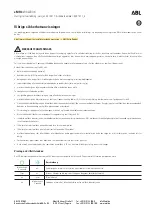
Some states also require children to
use a booster seat until they reach a
given age or weight (e.g., 6 years or
60 lbs). Be sure to check current
laws in the state or states where you
intend to drive.
A child may continue using a booster
seat until the tops of their ears are
even with the top of the vehicle’s or
booster’s seat-back. A child of this
height should be tall enough to use
the lap/shoulder belt without a
booster seat.
Booster seats can be high-back or
low-back. Whichever style you select,
make sure the booster meets federal
safety standards (see page
) and
that you follow the booster seat
maker’s instructions.
If a child who uses a booster seat
must ride in front, move the vehicle
seat as far to the rear as possible,
and be sure the child is wearing the
seat belt properly.
The National Highway Traffic Safety
Administration and Transport
Canada recommend that all children
age 12 and under be properly
restrained in the back seat.
If the passenger’s front airbag
inflates in a moderate to severe
frontal collision, the airbag can cause
serious injuries to a child who is
unrestrained, improperly restrained,
sitting too close to the airbag, or out
of position.
The side airbag also poses risks. If
any part of a larger child’s body is in
the path of a deploying side airbag,
the child could receive possibly
serious injuries.
36
Protecting Larger Children
When Can a Larger Child Sit in
Front
Dr
iv
er
and
P
asseng
er
Saf
e
ty
45
















































